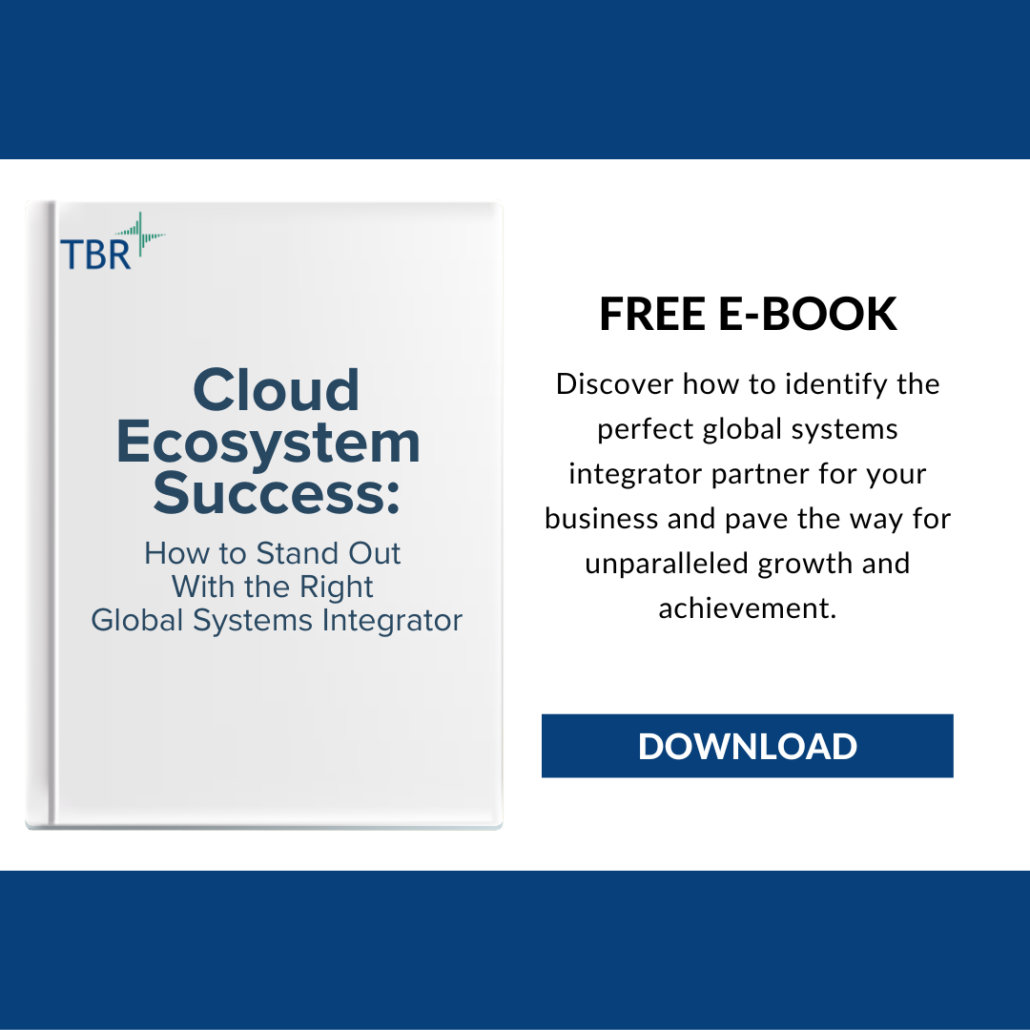Strategic Synergy: Maximizing Technology Alliances in the Ever-Changing IT Landscape
In a recent deep dive for a consulting client, TBR contacted three of the client’s technology partners to get a sense of what they thought about our client and the client’s immediate peers. We spoke with people who were very familiar with the alliance with our client, and we asked:
- Who managed the alliance relationship?
- Who decided when to bring our client in on an engagement and under what criteria?
- What did these technology companies think about our client’s ability to innovate and drive new business?
Prior to these conversations, we examined use cases and thought leadership pieces and analyzed what we knew about the three tech companies’ financial performance. We even spoke with customers who engaged our client and the client’s technology partners. The findings reinforced the fundamental elements of a good alliance: know your partner, respect your roles, and make the customer’s needs the center of everything you do together.
That’s not to say that we didn’t hear some new and nuanced responses. Among the critical lessons learned: If your partner’s sales people cannot explain what makes you special, you’re losing opportunities. Partners are not obligated or incented to build that knowledge. If you want them to be able to articulate your value proposition, your alliance relationship needs to include training, training and additional training. You cannot believe anyone in your own organization when they say, “Yeah, those guys know us.” You need to ask your partners yourself, at the client-facing level.

The Key to Strategic Alliances Lies in a Comprehensive Grasp of Partner Capabilities, Priorities and Incentives
Let’s build on this idea of really knowing your role and your alliance partners’ capabilities. In this messy, evolving ecosystem, as you’re being smart and clearly defining roles among alliance partners engaged with strategic clients, you’re going to run into one of the most vexing challenges seemingly every company faces: understanding what someone else does.
Internally, most companies tackle this through knowledge management, an almost always underfunded effort to ensure that employees know what other employees do and that everyone can articulate the company’s mission, capabilities and offerings. The reasons why most knowledge management efforts underwhelm are vast, but the short version comes down to lack of leadership, funding, curating and consequences.
In today’s IT ecosystem, vendors absolutely must ensure their mission, capabilities and offerings are well understood by their ecosystem partners. Similar companies have developed stark differences, and every company is spreading into adjacent swim lanes. If you don’t know what your ecosystem partners do, you’re going to underwhelm them (and be forgotten) or realize too late that they’ve been taking your money off the table. It’s almost impossible to overstate how critical a comprehensive understanding of your ecosystem partners’ capabilities, priorities and even incentives is to fully leveraging alliances.
Educating for Success: Elevating Partnerships Through Comprehensive Knowledge Sharing and Strategic Alignment in the Dynamic Technology Ecosystem
They need to keep you up to speed on all their speeds and feeds. In our research, the vendors that are dedicating resources to educating their ecosystem partners on developing portfolios, new offerings and changes in market perceptions and opportunities outperform peers and the IT market as a whole. Your sales people can’t be the only ones who understand your capabilities because they aren’t always the people who are in front of your clients. When your partners’ sales people are selling you, how well do they sell?
Everyone gets wrapped up in their own world, and we’re often advising our clients to stay in their own lane and do what they do well. As the technology ecosystem evolves, that’s not enough. Now companies need to be absolutely certain an understanding of their business model and value proposition extends to their alliance partners. As they say, the more you know!




 Technology Business Research, Inc.
Technology Business Research, Inc.